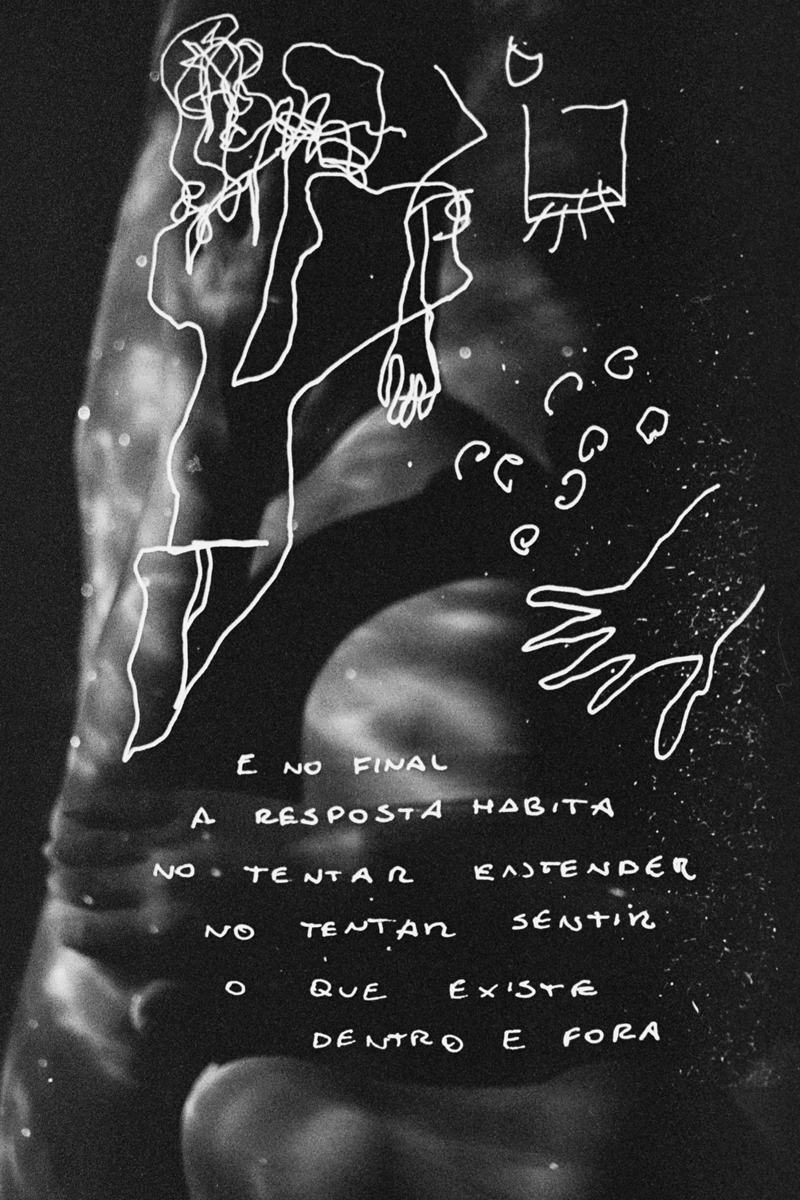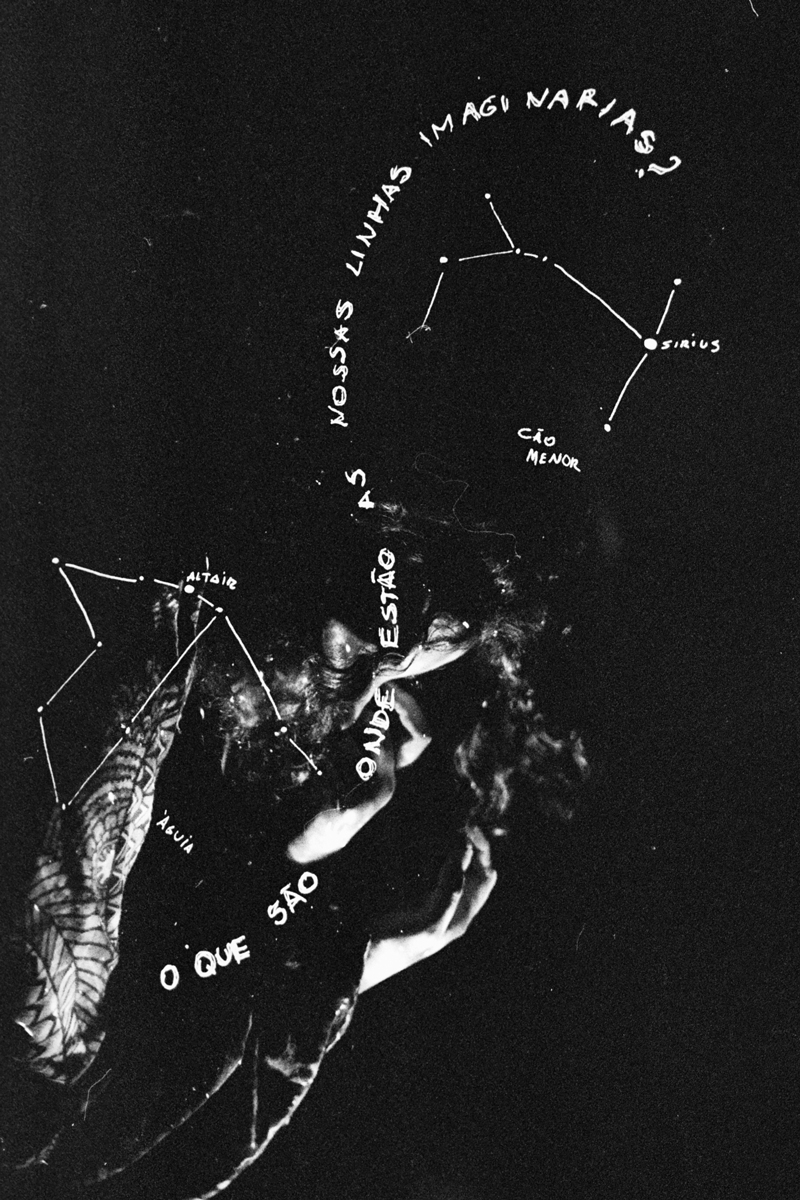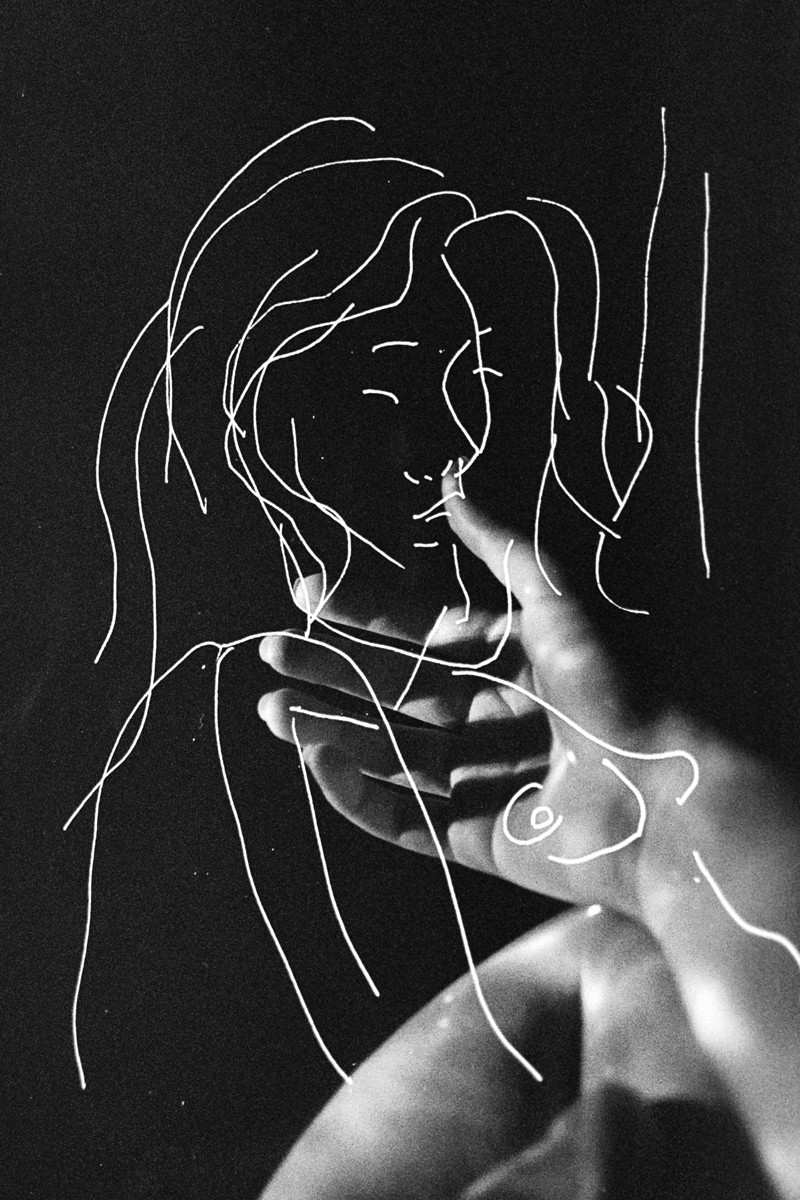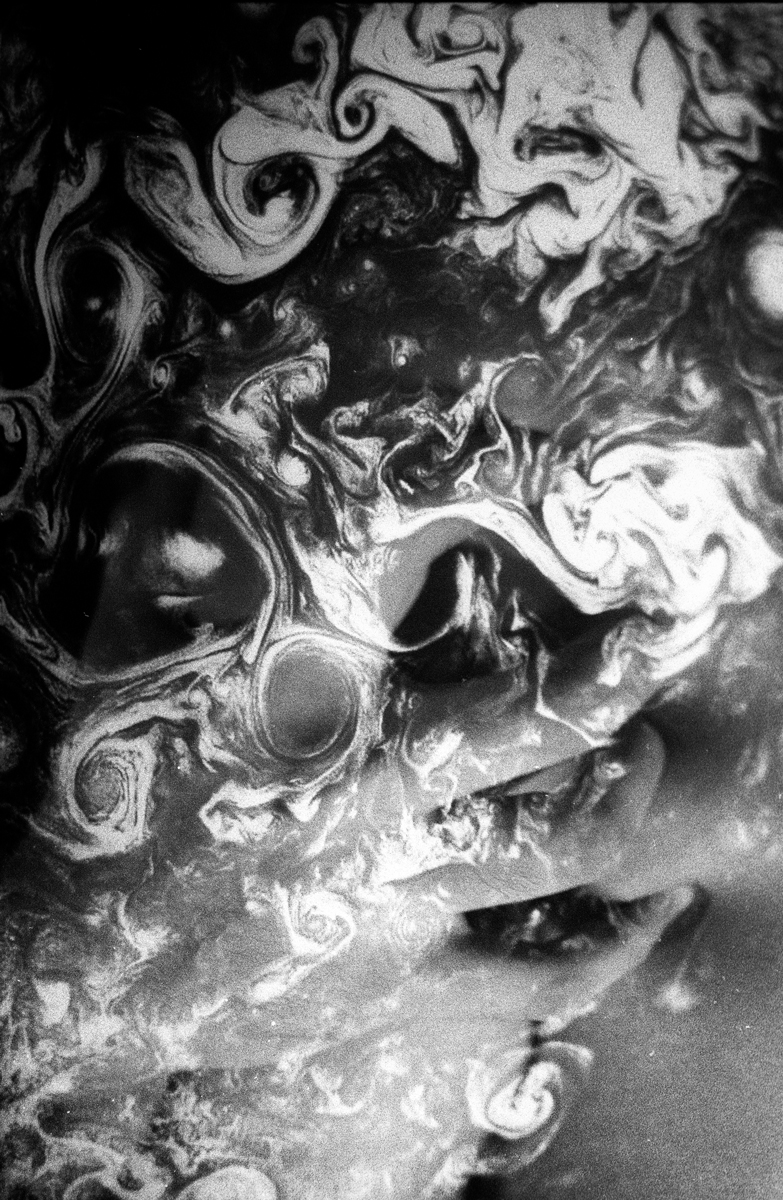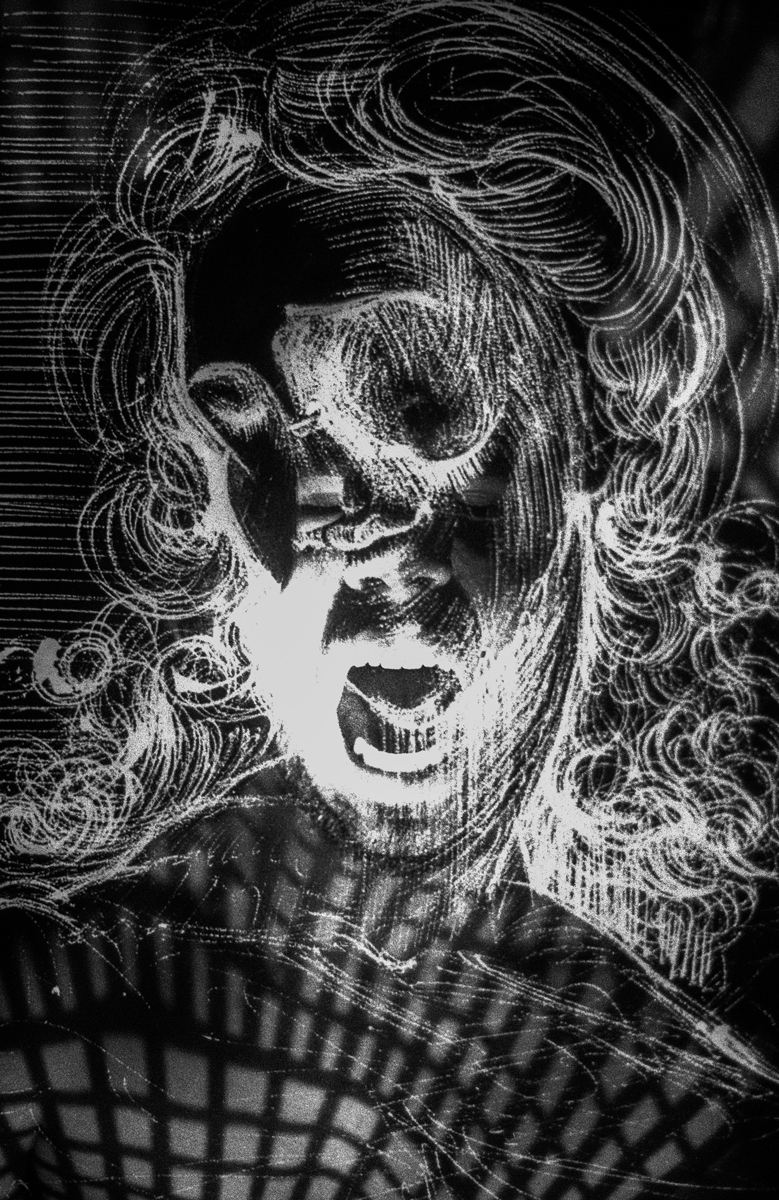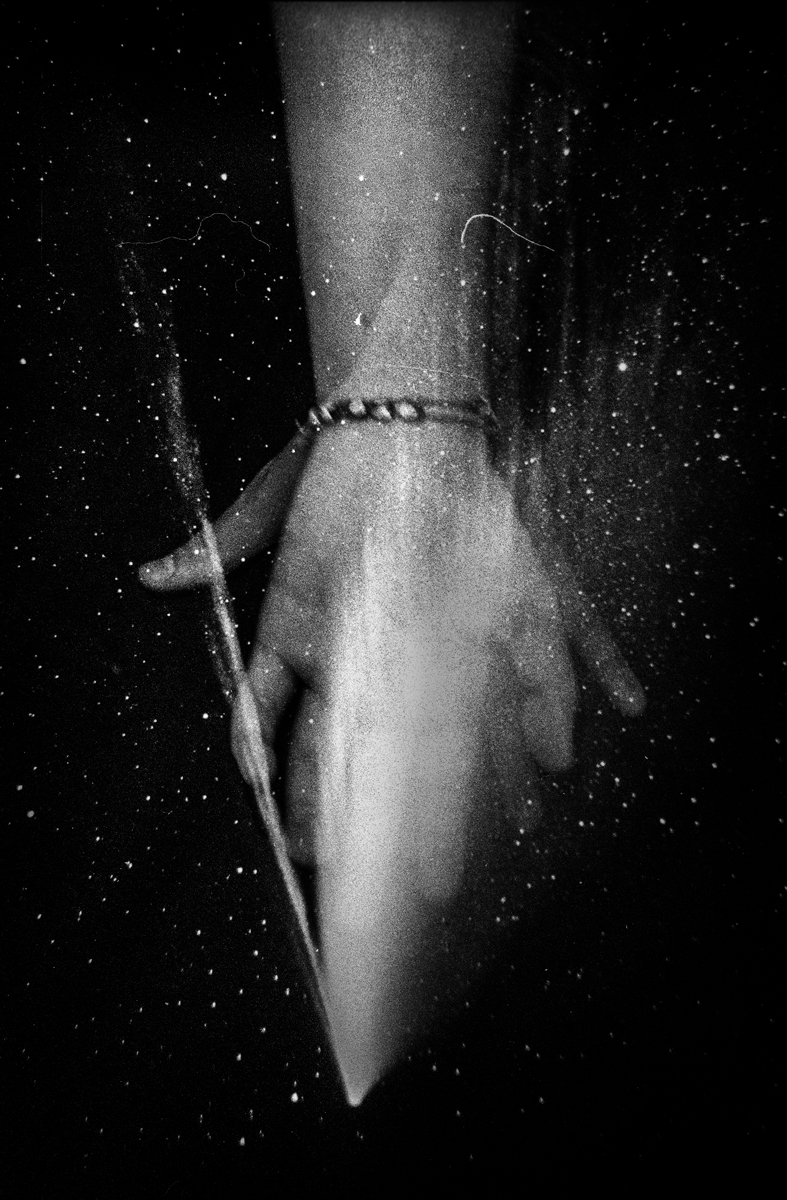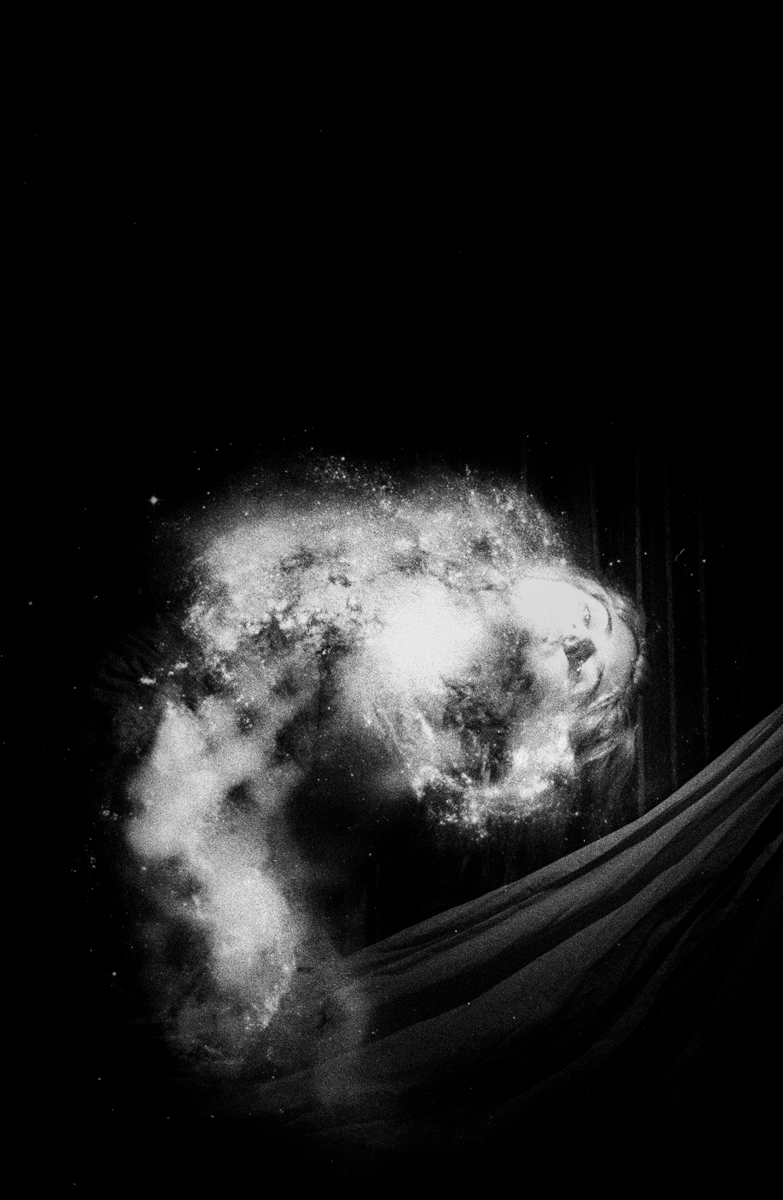In Focus - Amanda Monasterio Posted On 24th January 2023 To Magazine & In Focus

Our 65th In Focus interview is with film photographer and laboratorist Amanda Monasterio, who used multiple exposures in their work to represent feelings and temporality.
Section 1 - Background
Share your favourite image / print shot on ILFORD film and tell us what it means to you?
My favorite image ever photographed with ILFORD is definitely this one and it's from my project called "Asterismos" (Asterisms). This project draw parallels between the imaginary of being and inhabiting a body. My ancestors, their lives, their memories and their traces in time, which one day presented themselves to me, are present and potent in the complexity of the vital drawing in which I exist. For me film photography is a magical element. A feeling that materializes into grains of silver as a result of a reaction that allows us to show others the way in which we connect with the world. The fact that our language is the language of light is what amazes me the most - we are literally made of the same matter as the rest of the universe and our eyes are only able to see what that certain spectrum of light allows them to see. What is photography if not a different way of seeing? Just like a camera, we are gear parts from something much more advanced - and this is a reminder that we are a result of the universe's evolution as an essential part. With intimacy, I explore the line, the lineage and the depths of time, and communicate an intense and eternal self exploring.
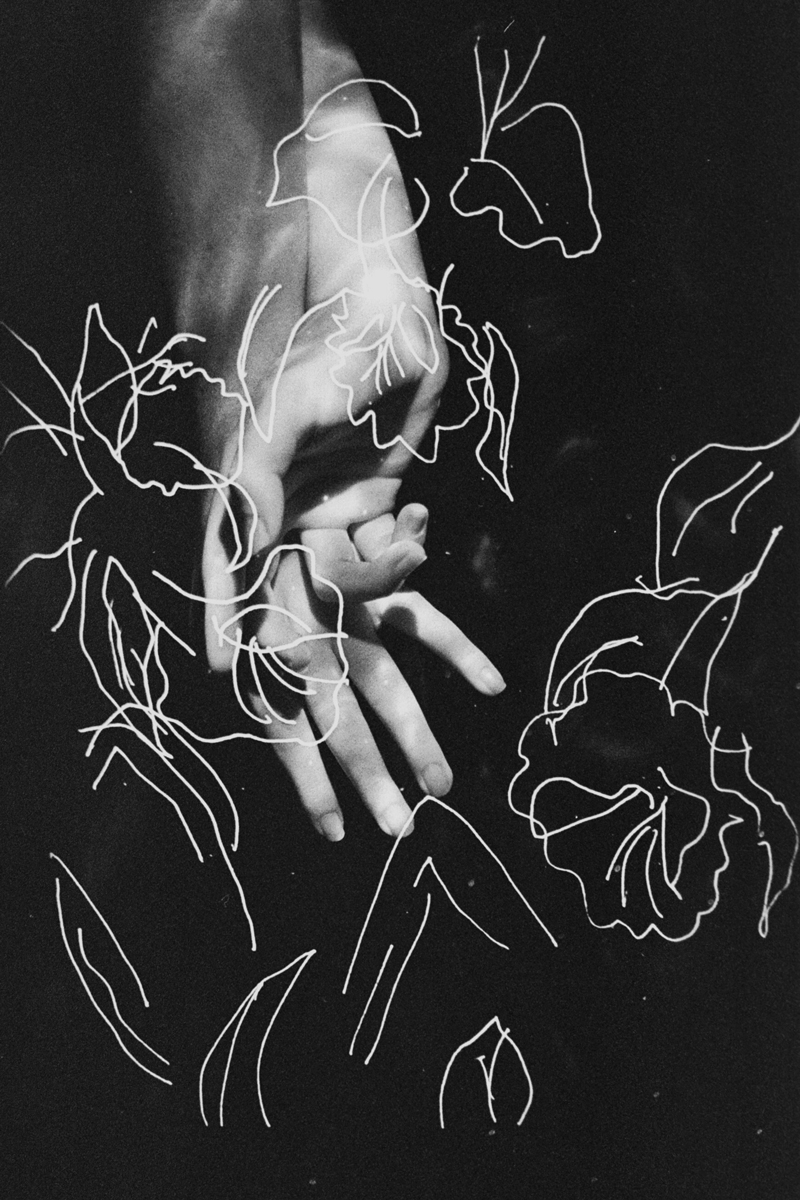
ILFORD HP5+ @3200 Asterisms
Just in case anyone doesn’t know who you are or what you do can you give us the overview?
My name is Amanda Monasterio, I'm a film photographer and laboratorist living in Brazil. My poetics surround what is unconscious, magical and cosmic. I am very intimate with every work I produce and I usually use multiple exposures as a way of representing feelings and temporality.
How and why did you get started shooting film?
I started shooting when I was a teenager, not as often as I shoot today though. I really started to appreciate film photography as a practice after inheriting my grandfather's camera when he passed away. Somehow, our relationship inspired me to see the moments as true treasures and I felt that, in a way, I should continue with his legacy of capturing with grains of silver what is most magical and special in the world. As soon as I entered the Federal University of Rio de Janeiro to study Social Communication, I had my first experiences in a lab. Palaraxe (@paralaxelab) is now one of the most complete labs in town, was built in the 2000's after years of students fighting for it in the 80's. After digital photography was spread all over the world the lab unfortunately started to reduce it's activities for years, but in 2019 they've decided to open a program for students and I learned there how to develop my own negatives and also how to enlarge my own photographs, and that was a turning point in my life. During the pandemic, I really missed the process and decided to try shooting film in low lights and developing the negatives at home, with chemicals and organic developers. Now I'm happy to say that I'm spreading knowledge being an extensionist in the same lab where I learned everything I know and trying to make analog photography more tangible for people in and outside our university! Studying at a public school is not easy, we depend directly on the government to pay for our activities, the last 4 years have been tough for public education, and we unfortunately do less than we really tend to do because of the lack of investment. We see ourselves saving ILFORD's photo paper and films, and literally counting them, to give the opportunity for people to create another relationship with images. We have already received children from public schools in Rio to photograph pinholes and develop their own images, made photograms and enlarging classes for students multiple times and every single time we face wonder from them. In my opinion, that's the real power of public education. Brazil is still a colonized country and faces a lot of social inequality and analog photography isn't cheap, that's where university takes a place of change. We know the majority of those people wouldn't have the opportunity to live these experiences if it wasn't for that space so as long as we can we will keep fighting for the lab to resist.
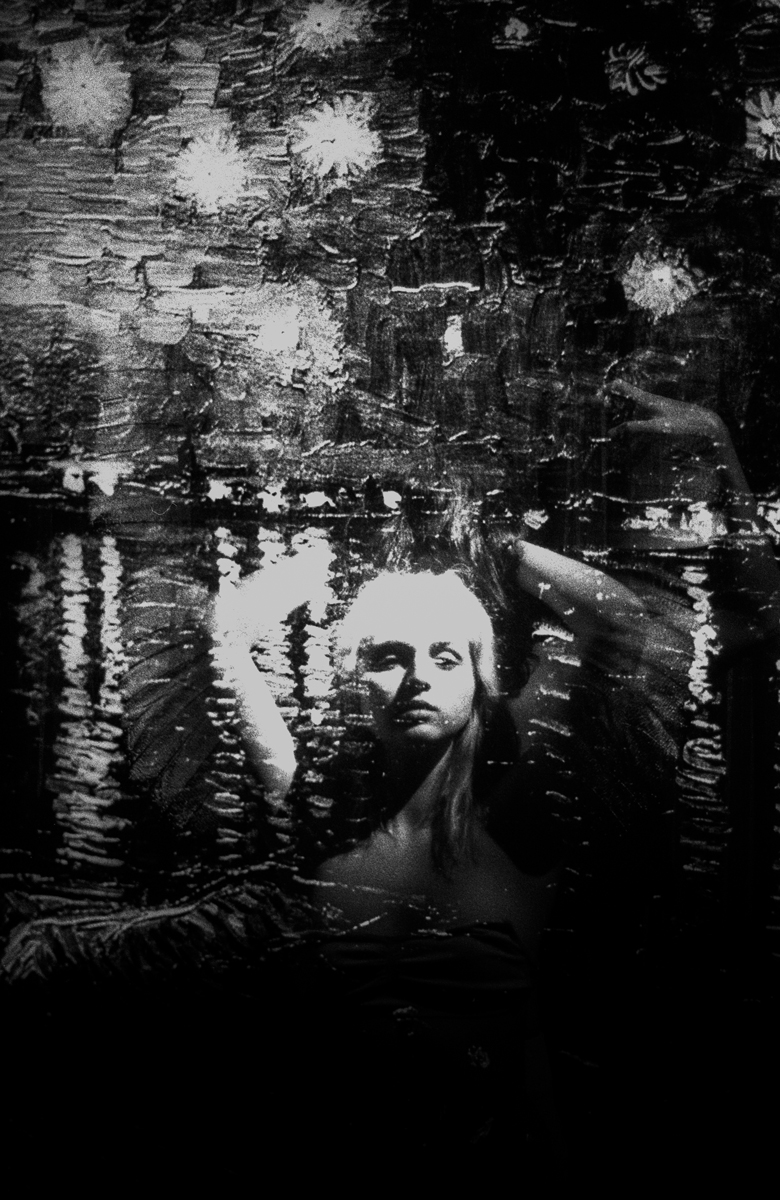
ILFORD HP5+@3200-Oneiric
Who has been your biggest photographic inspiration to date?
In technical terms, Dora Maar and Man Ray are at the top of my list of references… But surely the photographer who inspires me the most nowadays is called Samanta Ortega (@floraefilme on IG), also Brazilian, she lives in São Paulo and does amazing works making interventions on her negatives and turning her images visible using herbal developers. Also the way she reinvents herself in each self-portrait really gives me goosebumps.
What is the best piece of photography tip or advice you have ever received?
When I had my first photography class, as a teenager, the teacher told the class that as soon as we bring the camera to our face, our ego has a duty to go away. I've never forgotten this teacher's line but I could extend it a little further. I believe that the ego should go away before the camera even gets to our face. As artists we have a moral duty to share our knowledge and, above all, our processes. Art is built collectively and is a way of representing our worldview and, unfortunately, it is still inaccessible to many people until today, especially in my country.
What film photography related projects are you currently working on (or are in the pipeline)?
I am currently very excited about multiple exposures. I intend to continue experimenting with different approaches, whether they are more concrete or more abstract. Furthermore, I am involved in a film swap project called Deriva Cartográfica (@derivacartográfica) in which people from every region of Brazil will have the opportunity to exchange films with each other to create images that truly represent our cultural diversity.
What / where is your next shoot and how do you decide what film / kit you will use?
I intend to continue with the multiple exposures and, at the same time, I look forward to experimenting with enlarging my own photographs in the laboratory. Maybe cyanotypes.. I still don't know the projects that are coming, my processes usually involve feeling more than planning. As for the choice of films, I always prioritize films that have a high latitude so that I can push them, since in Brazil high ISO films are very expensive and also so hard to find.
What are your photographic goals going forward? (Can be business or personal).
I intend to participate in more and more exhibitions, inside and outside Brazil, and also release a book on my photos with some of my texts, but it’s still just an idea.
- ILFORD HP5+@3200-Asterisms
- ILFORD HP5+@3200-Asterisms
- ILFORD HP5+@3200-Asterisms
Section 2 - Shout outs
We all need a bit of inspiration and love so this is your chance to tell the community about yours – from the film photographers whose work inspires you, the labs you trust with your film, your ‘go to’ film photography stockists, your favourite community darkrooms or just anyone in the community who you feel deserves a special mention.
Give a shout out to your 3 favourite film photographers
Definitely Samanta Ortega (@floraefilme on IG), she makes interventions on her negatives using corrosion and her images are just spectacular, I'm in love with everything she does artistically! The world needs to know her!
Jase (@jase.film on IG) does an amazing job with film astrophotography and I go crazy with his sky images!
And last but not least Hury Ahmadi (@huryahmadi on IG) also has amazing photos and you should definitely see her work!
Give a shout out to your favourite photography YouTube channels (apart from the @ilfordphoto one).
- Holograin: www.youtube.com/c/Holograin
- Lab:Lab Analógico: https://www.youtube.com/c/LABLABAnalogico
Give a shout out to your favourite photographic retailers
- O cara dos filmes - São Paulo, Brazil: (https://ocaradosfilmes.meucatalogodigital.com/ocaradosfilmes/)
- Lab Gruta - Rio de Janeiro, Brazil: (www.labgruta.com)
- O Retratista - São Paulo, Brazil: (https://www.diafragma8.com.br/)
Give a shout out to your favourite lab service
I'll always give a shout out to my favourite place in this whole world Paralaxe Lab <3
- Rio de Janeiro, Brazil: www.instagram.com/paralaxelab/
- Lab 8 - Fortaleza, Brazil: lab8oito.lojaintegrada.com.br/
- Lab:Lab Analógico - Curitiba, Brazil: https://lablab.com.br/
- Vapt-Vupt Lab - Rio de Janeiro, Brazil: www.instagram.com/vaptvuptlab/
- ILFORD HP5+@3200-Oneiric
- ILFORD HP5+@3200-Oneiric
Section 3 - Favourite kit
What film cameras do you own and which is your favourite?
I actually collect old cameras so I have lots of them. The ones I use the most are a Nikon FM2 and a Nikkormat FT2.
Aside from your camera, lenses and film what accessories make it into your camera bag?
Currently a gigantic black fabric to simulate an infinite background and my phone photometer!
What is the best piece of photography kit you have found or been gifted?
Probably the kit I inherited from my grandfather. A black Nikkormat FT2 and two lenses, a 50mm f/2 and a 200mm f/4.
As this is an ILFORD interview it would be remiss of us not to ask about your favourite ILFORD products. Tell us you favourite ILFORD film, paper or chems and why?
My favorite film is ILFORD Hp5+, I love its intense black and its high latitude. As for paper, I really like the matte multigrade. As for chemicals I can't say for sure because the only time I used them was at my university’s lab and they always worked amazingly!
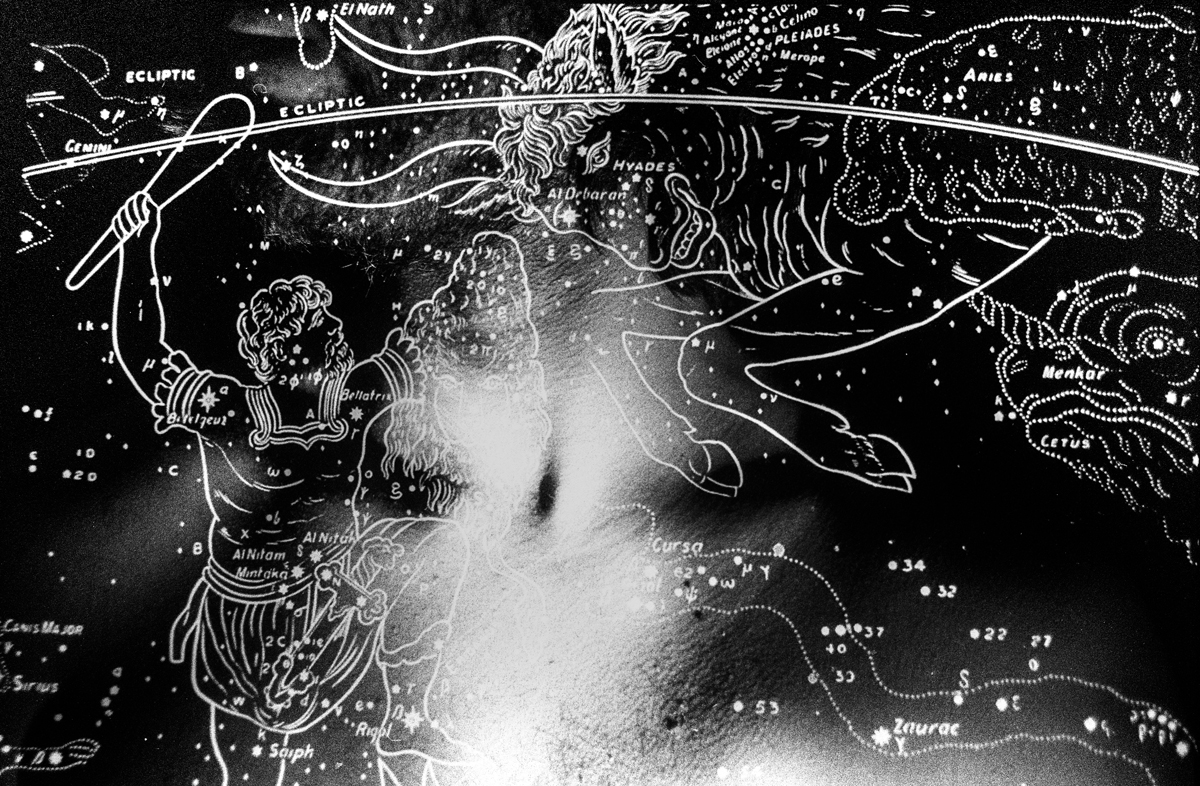
ILFORD HP5+ @3200 Oneiric
- ILFORD HP5+@3200-Oneiric
- ILFORD HP5+@3200-Oneiric
And finally…
Nominate one other person you think should fill in this form and we will reach out to them
Samanta Ortega (@floraefilme on IG)!!!!!!! She deserves a lot of recognition for what she does. Her processes and her images are really inspiring. Currently she’s also working on a website called Alquimia Fotográfica (Photographic Alchemy) which the purpose is to disseminate her knowledge on herbal developers and alternative processes to Portuguese speakers. (@alquimiafotografica.co on IG). She’s an amazing photographer and an inspiring person! You guys should definitely reach out to her!
About The Author

Amanda Monasterio
Amanda Monasterio (1999) is a Brazilian analog photographer and laboratorist. Currently, in addition to experimenting with her own rolls through active developers (such as beer, coffee and cachaça), she uses double exposures as marks of temporality. Her work was present on some group exhibitions in Brazil such as the seventh exhibition of Photography and Plural Art (2022), at Fábrica Bhering in Rio, the Photo Festival SOLAR (2022) held in Pinacoteca of Ceará’s State, “Efêmero” (2021) an experimental photography festival with an open-air exhibition in Fortaleza, “Aquilo Acolá” held in the Federal University of Ceará Art Museum and “Costurando Enquanto o Tempo Cai” resulted exhibition of the Experimental Workshop at the Creative Laboratory (LACRE) of Rede Cuca – Urban Centers for Culture, Art, Science and Sport of Fortaleza’s City Hall. In addition, she had some of her photographs selected to participate in the virtual exhibition at the São Paulo Analog Art Festival, held at the Unibes Cultural space. Her work is also present in some magazines such as Carcará Photo Art Magazine, Thésis Magazine, Sagrada (@sagrada available on Instagram) and in the honorable mention area of the second edition of Ember Analógica, the first physical magazine dedicated solely to analog photography in Brazil.
You can see more of her work on her website www.amandamonasterio.com
and follow her on IG @monastxrio.







